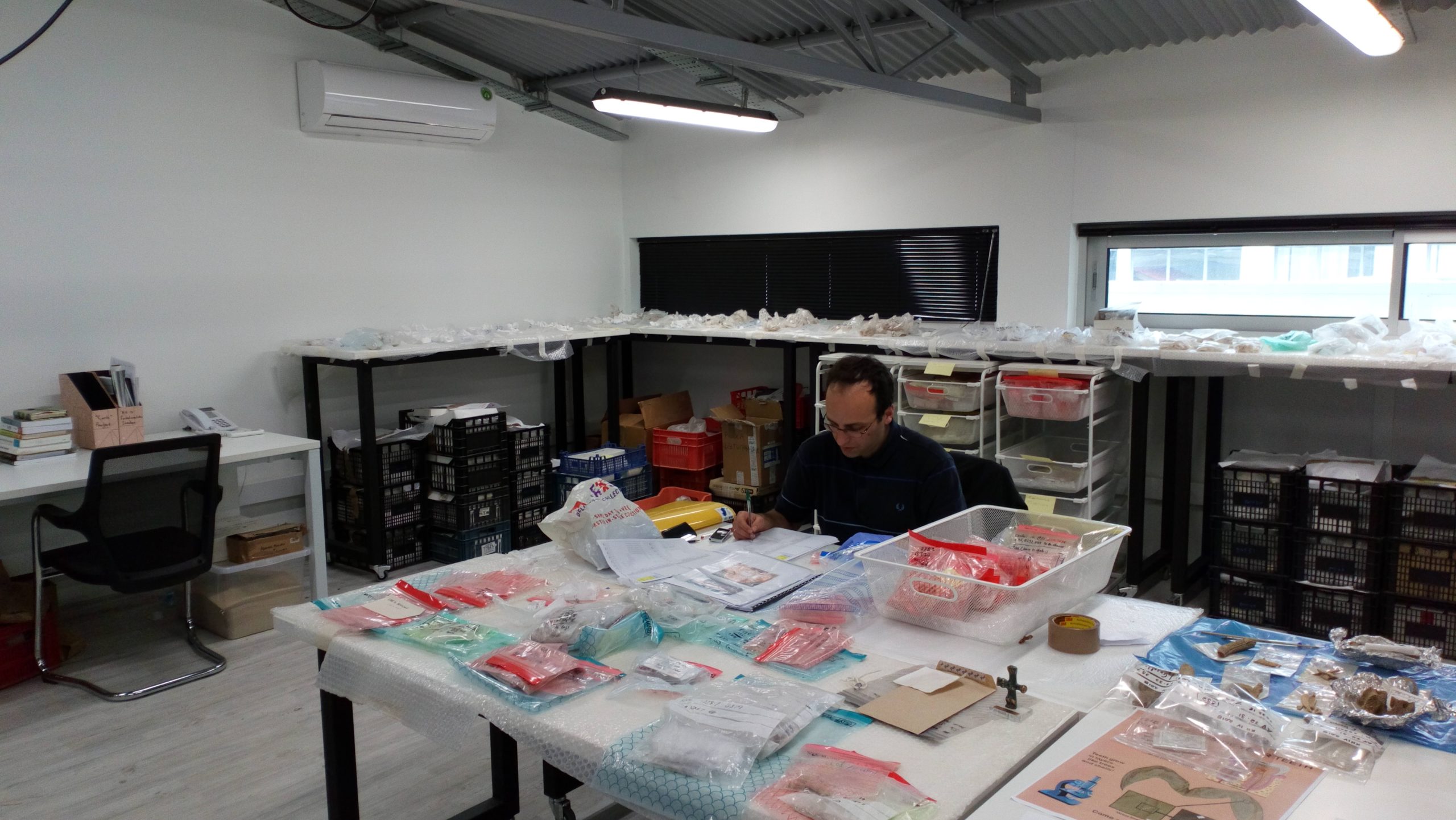
By Christos Papadopoulos, PhD candidate at the University of Wales Trinity St David and 2019 CBRL Sam Lieu Travel Grant recipient.
It is a great honour to receive the 2019 CBRL Sam Lieu Travel Grant. The award funded a second field trip to Cyprus in April, where I studied and recorded dental morphology traits on Cypriot human collections ranging from the Chalcolithic until the Late Bronze Age.
Through the dentitions I have examined, I hope to identify similarities and potential discrepancies in dental morphology between the Cypriot samples. The latter may indicate a change in composition of the inhabitants which may indicate a migration event. The preliminary results so far indicate interestingly an overall continuity of the population during this timeframe. However, the complete statistical analysis is still in progress and this is an early stage indication rather than a definitive conclusion.
One of the key features of each phase in Cypriot prehistory is the discontinuity: the abandonment of existing settlements and the establishment of new ones, the introduction of new types of architecture, technology advances, different mortuary practices and changes in material culture. The interpretation of these events and the question of migration, colonisation and hybridisation of the Cypriot population during the transitional periods are the subject of ongoing debate (Steel 2004; Knapp 2013).
Biological distance is the measurement and interpretation of relatedness or divergence between populations based on polygenic skeletal and dental traits. The study of non-metric dental traits is very useful in biodistance analyses as teeth are subject to strong genetic control and there is no requirement for special and expensive equipment to score them. Dental morphology studies could provide an indication on the biological affinities between past human populations from different chronological and geographical contexts. Populations sharing similar frequencies of present/absent dental traits are likely to be biologically close. (Pilloud and Hefner 2016; Scott & Irish 2017).
My PhD project focuses on examining the biological continuity within Cypriot population from a number of settlements ranging from the Chalcolithic period until the end of Late Bronze Age. The study is based on the evaluation and statistical analysis of the frequencies of certain non-metric dental traits within each population.
I visited Cyprus in November 2018 for an initial field trip to study the dentitions of the human remains from the excavations at Souskiou Vathyrkakas (Kouklia Museum), Sotira Kaminoudhia & Episkopi Phaneromeni (Episkopi Museum) and Deneia (Nicosia Museum). The evaluation of the dental traits was performed using visual inspection with the aid of magnification when necessary.
Thanks to the 2019 CBRL Sam Lieu Travel Grant, I was able to visit Cyprus again in April to record the teeth morphology from human remains from more excavations. This was significant for completing my research project – I now have dental data to represent each period from the Chalcolithic until the end of Late Bronze Age and beginning of Geometric period. The latter study conducted mainly at Cyprus Institute facilities where Kissonerga Mosphilia, Lemba Lakkous, Alassa Pano Mantilaris and Palaepaphos Skales human collections are currently stored (I have to thank at this point archaeological officer Dimitra Aristotelous from Limassol Museum for facilitating the study and Dr Kirsi Lorenz for permission to visit Cyprus Institute lab). In addition I have studied a number of dentitions from the Chalcolithic period at Paphos Museum and a few from the Late Bronze Age at Limassol Museum during this trip.
Over the next few weeks I will complete the full statistical analysis of the dental data to see what the results may indicate for the population relationships. I plan to compare and discuss Cypriot data against published results from research works in East Mediterranean (Levant and Anatolia) and I hope to record dental data from Peloponnese, Greece. Archaeological studies have showed interactions during this period with these and it would be interesting to explore affinities.
References:
Knapp, A. B. 2013. The archaeology of Cyprus: From earliest prehistory through the Bronze Age. Cambridge University Press.
Pilloud, M. A. and Hefner, J. T. (Eds) 2016. Biological distance analysis: Forensic and bioarchaeological perspectives. Academic Press.
Steel, L. 2004. Cyprus before history: from the earliest settlers to the end of the Bronze Age. Bristol Classical Press.
Scott, G. R. and Irish, J. D. 2017. Human Tooth Crown and Root Morphology: The Arizona State University Dental Anthropology System. Cambridge University Press.
Christos Papadopoulos is currently undertaking his PhD at the University of Wales: Trinity St David, under the supervision of Doctors Louise Steel and Ros Coard. He is a qualified dentist (DDS, Aristotle Uni. of Thessaloniki) and he has previously completed an MSc in Forensic Odontology with Distinction at the University of Glamorgan (2011) and a Postgraduate Certificate (Merit) in Medical Law & Ethics at the De Montfort University (2016). Parallel to his PhD study and Legal & Forensic Dentistry work he continues to provide services part-time as a clinical dentist in the UK.
The views expressed by our authors on the CBRL blog are not necessarily endorsed by CBRL, but are commended as contributing to public debate.














